Hot Pepper Sauce is a household staple in many Guyanese kitchens, made from scratch using fiery chili peppers, vinegar, and mustard. This bold, tangy 4-ingredient Caribbean-style hot sauce recipe adds heat and flavor to any dish.
Hot Pepper Sauce
My dad is visiting me from New York, and I’m running low on the pepper sauce I brought back to Denver after seeing him last summer. So naturally, I asked him to teach me how to make his version—and of course, I recorded it so my extended family (you!) can learn too. His homemade hot sauce is so simple, but it packs a punch, and just a few drops are enough to bring any dish to life.

Why You’ll Love This Guyanese Pepper Sauce Recipe
- Flavorful: This sauce brings a bold kick with just the right balance of acidity and zing, making it more flavorful than most store-bought options.
- Quick and easy: There’s no cooking involved—just a quick blend of simple ingredients and you’re done.
- Versatile: A few drops can enhance everything from meats and rice dishes to soups and marinades.
What is Pepper Sauce?
Pepper sauce is what Guyanese and Caribbean people call hot sauce. Made with chili peppers, vinegar, and mustard, it’s a staple on kitchen tables across the Caribbean. We love a little heat with our meals, and every household has their own version.
Ingredients
I like to use whatever chili peppers I have on hand, but when I can get fresh wiri wiri, that’s my go-to—they add heat and a little sweetness. The mustard might seem unexpected if you’ve never made Guyanese pepper sauce before, but trust me, it makes all the difference.
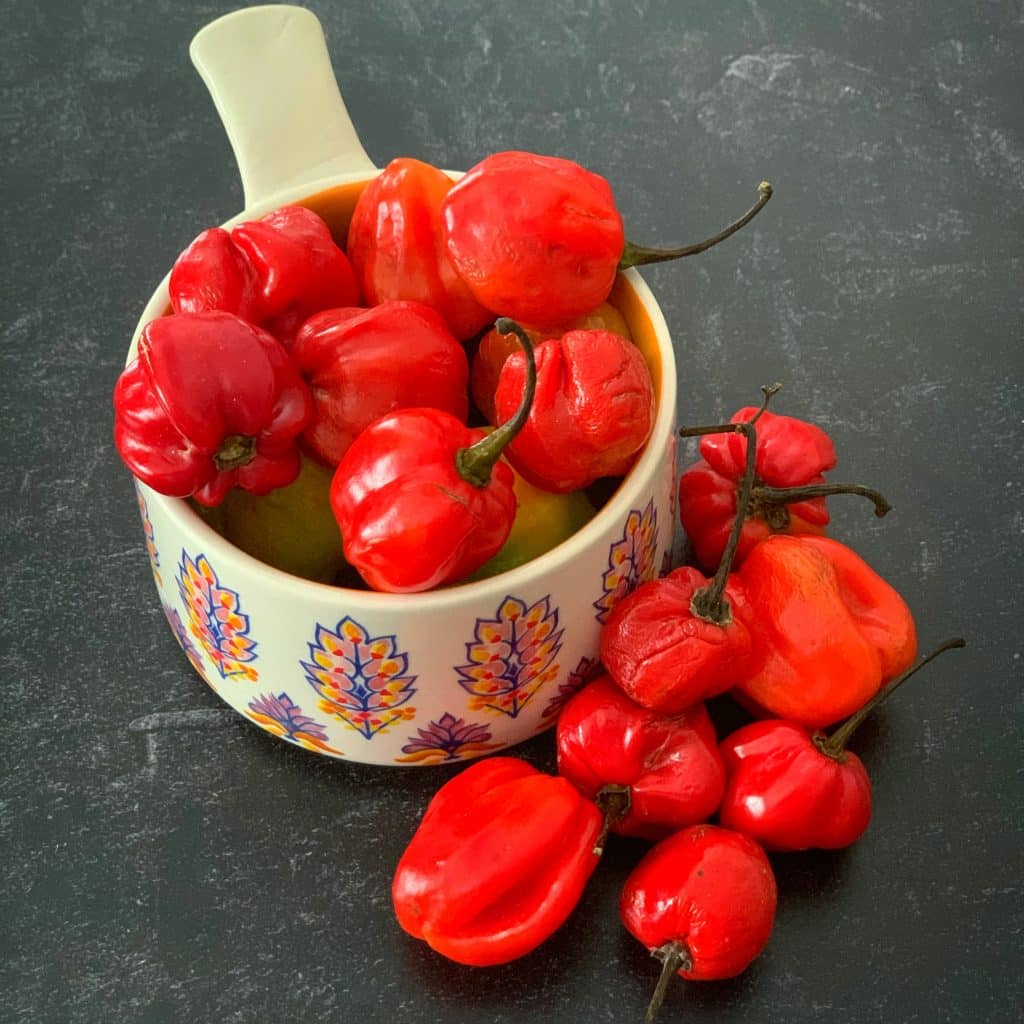
- Chili peppers: The main source of heat and flavor, chili peppers give this sauce its fiery kick. You can use a mix of wiri wiri, Scotch bonnet, or any hot pepper you like depending on your spice tolerance.
- White vinegar: Adds sharpness and acidity while also helping to preserve the sauce. It balances the heat and keeps the flavors bright.
- Yellow mustard: Brings tang, color, and body to the sauce, tying everything together with a signature Guyanese twist.
- Salt: Enhances the overall flavor and helps the ingredients blend smoothly.
See recipe card for quantities.
How to Make Hot Pepper Sauce from Fresh Hot Peppers
Blend the Ingredients
I start by adding the chili peppers, vinegar, mustard, and salt to my blender. Make sure the peppers are washed and the stems are removed before blending. Blend everything until the mixture is completely smooth.
How to Store Homemade Hot Sauce
Once it’s blended, I pour the pepper sauce into a clean, sterilized glass jar or bottle. I like using glass containers because they don’t hold onto odors and they keep the sauce tasting fresh. But my dad likes to reuse an empty glass jam jar. Just make sure the lid fits tightly to seal everything in.
I always store my pepper sauce in the fridge to help preserve it and prevent mold or bacteria from growing. As long as it’s properly sealed and you use a clean utensil each time, it can last for up to 1 to 2 months. That said, this spicy condiment never lasts that long in my house. We go through it fast!
Keep It Fresh
I always store my pepper sauce in the refrigerator to extend its shelf life and prevent mold. It keeps well for weeks as long as it’s properly sealed. And remember: always use a clean spoon or utensil to scoop it out so it doesn’t get contaminated.
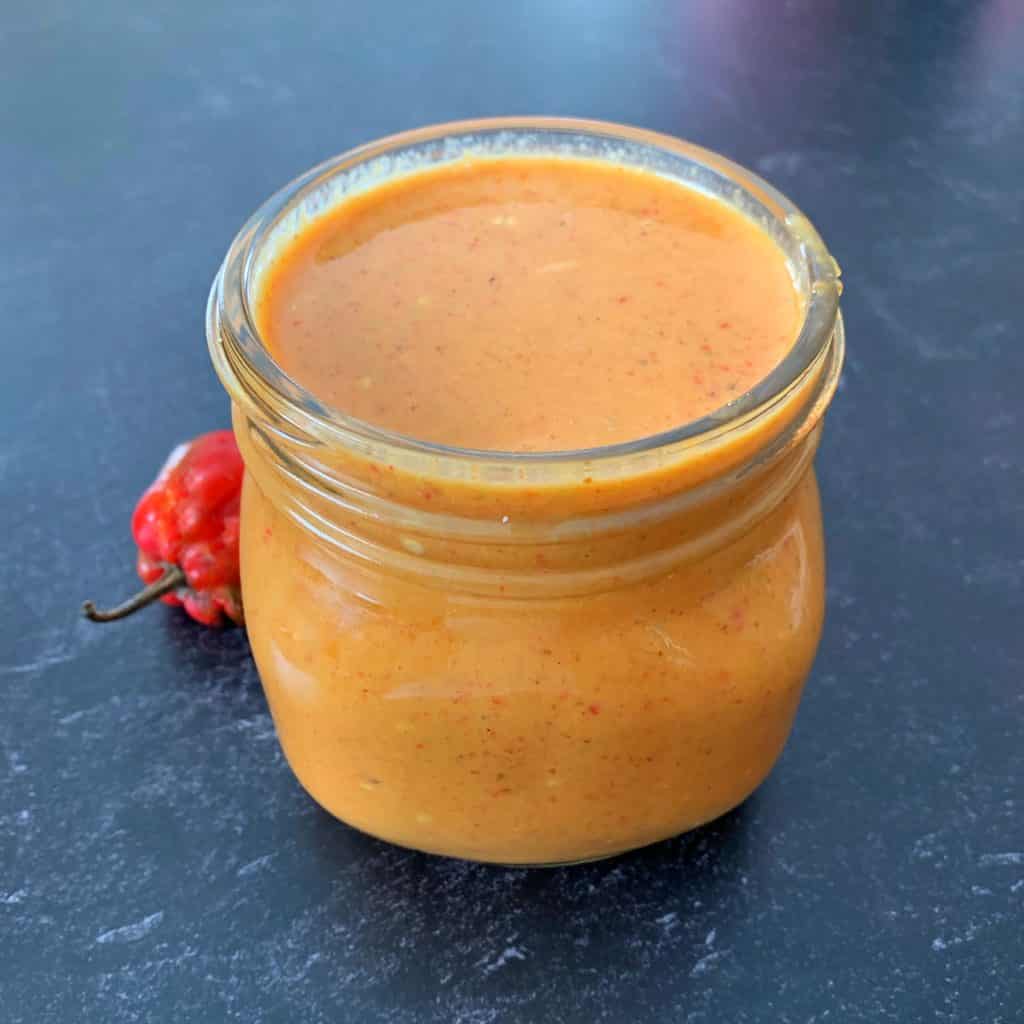
Tips for the Best Hot Pepper Sauce
- Always use clean, sterilized containers. This helps prevent bacteria or mold from forming and keeps your sauce tasting fresh for longer.
- Use a clean utensil every time. Double-dipping or using a dirty spoon can introduce contaminants that shorten the shelf life.
- Refrigerate for safety and freshness. Even though vinegar and mustard are natural preservatives, keeping your sauce cold slows down spoilage.
- Pay attention to acidity (pH). A safe homemade hot sauce should have a pH of 4.0 or lower to prevent bacterial growth. You can pick up inexpensive pH test strips online or at a brewing store—it’s a great way to double-check your sauce’s shelf stability.
- Let it rest before using. The flavors develop and mellow after a few days in the fridge, so try not to use it all right away!
Recipe Variations
Types of Peppers
This recipe works well with a variety of chili peppers. My go-to is fresh wiri wiri, which brings intense heat with a touch of sweetness. But those can be hard to find, so I usually reach for Scotch bonnet peppers—they’re easier to get and still deliver that bold, fruity heat that makes this sauce so good. If you want something milder, mix in fresno or red jalapeño peppers for a slightly fruitier flavor without losing the kick. I sometimes do a mix depending on what’s available or what kind of heat I’m in the mood for.
Mustard Options
Yellow mustard is the classic choice and gives the sauce that bright color and tang. But if you’re feeling adventurous, you can swap in Dijon mustard for a bit more bite, or even spicy brown mustard to add depth. Just keep in mind that changing the mustard will subtly shift the flavor of the entire sauce, so adjust to taste.
Aromatics
If you want a more complex flavor, try blending in one or two garlic cloves or a small chunk of onion. It’ll add a savory note that pairs well with the heat and acidity, especially if you’re using the sauce on meats or rice dishes. Just remember to store it in the fridge and keep an eye on shelf life, as fresh ingredients can shorten it.
Serving Ideas
- Fried fish. The crispy coating and tender interior make fried fish a perfect match for a bold hot sauce. Just a few drops cut through the richness and add a flavorful heat that balances each bite. Try them with my Salmon Bites.
- Pholourie. These soft, fried split pea fritters are traditionally served with tamarind or mango sour, but hot pepper sauce adds an extra layer of heat that complements the fluffy interior. Dip lightly for a spicy twist on a classic snack.
- Cook-up rice. This one-pot dish is rich and savory, making it the perfect base for hot pepper sauce. A little heat brightens up the flavors without overpowering the dish.
- Eggs. Whether scrambled, boiled, or fried, eggs benefit from a spicy kick. A few drops of hot sauce bring life to simple breakfasts or sandwiches. I like a dash on Deviled Eggs.
- Soups and stews. From Beef Stew to Split Pea Soup, this sauce adds a welcome boost of heat and acidity. It’s especially good in slow-cooked dishes that need a final burst of flavor.
- Plantains. The natural sweetness of ripe plantains is balanced beautifully by the heat and tang of this sauce. It’s a satisfying sweet-and-spicy combo, especially when the plantains are fried, like my Sweet Plantain Home Fries.
Frequently Asked Questions
The terms are often used interchangeably, but in the Caribbean—especially in Guyana—pepper sauce refers to a homemade, vinegar-based hot sauce made with fresh chili peppers and sometimes mustard. In other regions, hot sauce may refer to commercially bottled versions with added preservatives or a thinner consistency.
Blend chili peppers, vinegar, mustard, and salt until smooth, then store the sauce in a sterilized glass jar. Keep it refrigerated to maintain freshness and extend shelf life.
Vinegar helps preserve the sauce and adds a sharp acidity that balances the heat. Mustard contributes flavor, body, and that signature tangy taste found in Guyanese pepper sauce.

Pepper Sauce
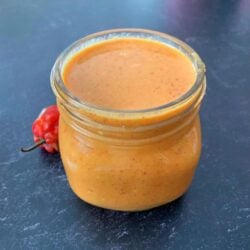
Equipment
- Blender
- Glass jar or bottle with airtight lid
- funnel optional
Ingredients
- 2 cups of peppers washed and stems removed
- 3/4 cup of white vinegar
- 1/4 cup of yellow mustard
- 1 teaspoon of salt
Instructions
- Add all of your ingredients to a blender and puree until a smooth sauce forms
- Pour into a clean sterilized air tight container, preferably a glass container
- You may store in the refrigerator to prevent mould and bacteria from growing over time
- Always use a clean utensil to take pepper sauce from the jar.
Nutrition
The information listed in the recipe card is an estimate provided by an online nutrition tool. The tool evaluates ingredient names and amounts then makes calculations based on the number of servings listed for the recipe. It is provided as a general guideline and not as a precise calculation. For precise nutrition information please feel free to add the ingredients to your preferred nutrition calculator or consult a doctor or licensed nutritionist.
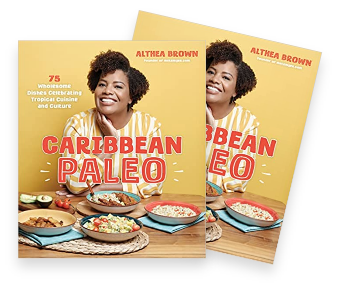

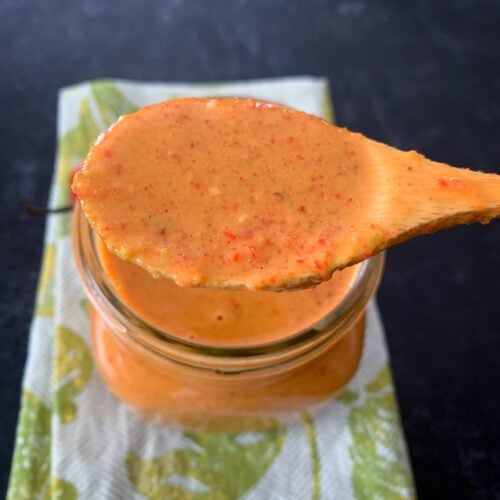
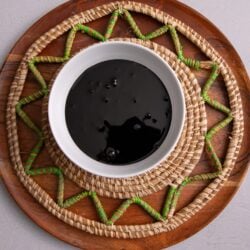 Cassareep
Cassareep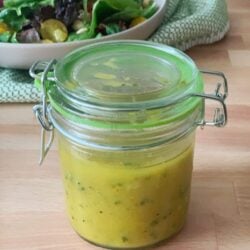 Tangy Mango Vinaigrette {Whole30, Paleo, Vegan}
Tangy Mango Vinaigrette {Whole30, Paleo, Vegan}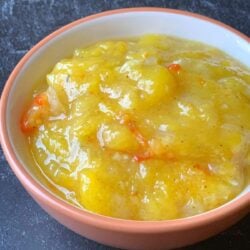 Instant Pot Mango Sour
Instant Pot Mango Sour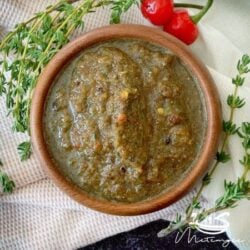 Jerk Seasoning (Whole30, Paleo)
Jerk Seasoning (Whole30, Paleo)
Jason Says
Where can you get wiri wiri or actual scotch bonnet (not habaneros,) in Denver? Any good roti spots?
Althea Brown Says
I get scotch bonnets from a Jamaican grocery store on Illif and I225. No roti spots yet ????
Kimbilly Charles Says
I am Guyanese and I love this simple method. I will definitely try this soon.
Nadine Says
HI! I was wondering would the recipe still call for 2 cups if i use wiri wiri peppers? Thank you for the recipe!
Althea Brown Says
Hi it will likely be 1 cup of wiri. I think it was like 7 ounces of peppers when I weighed it if I remember correctly. Because the peppers are larger than the wiri wiri it would take less than 2 cups of wiri wiri for the ingredients I used.
Jasmin Says
Cant wait to make this. Do u think frozen peppers wou work just as well?
Althea Brown Says
Yes it will. Usually I only have frozen peppers but got lucky with these fresh ones. I would soak them in water to help them to defrost first.